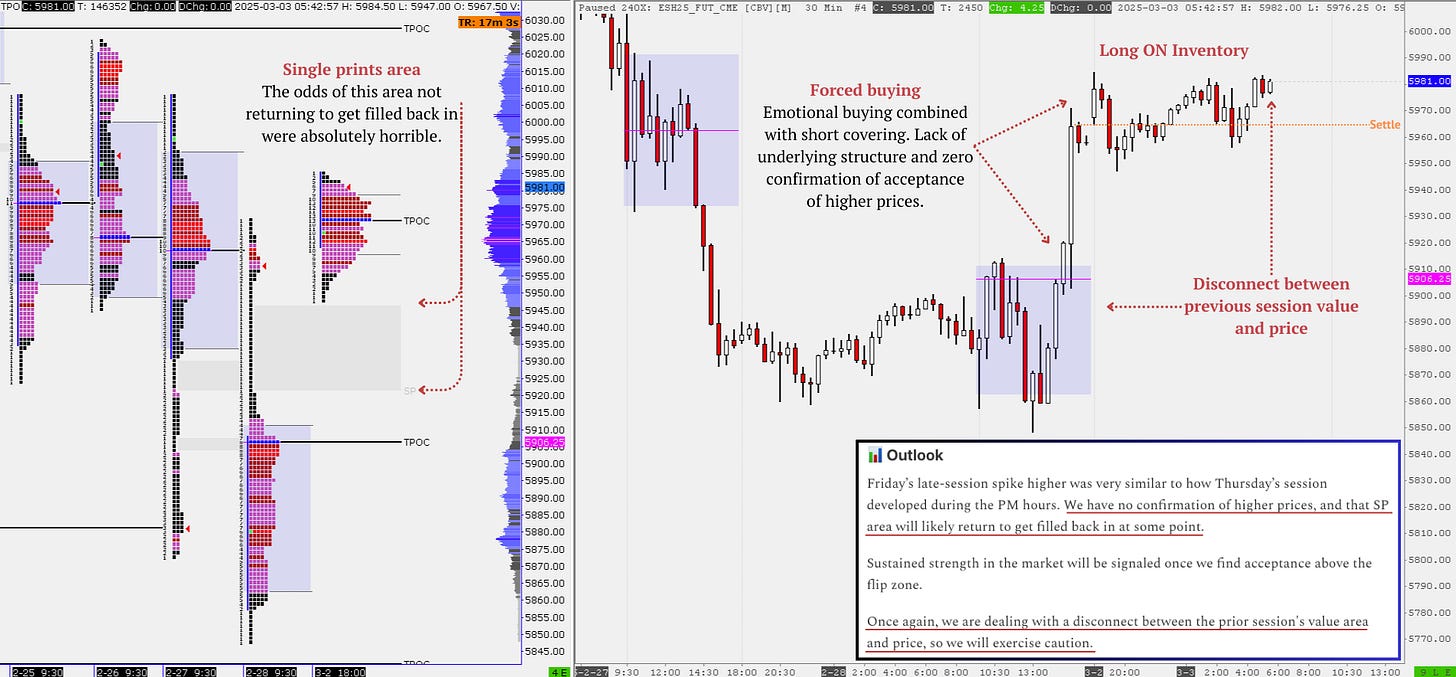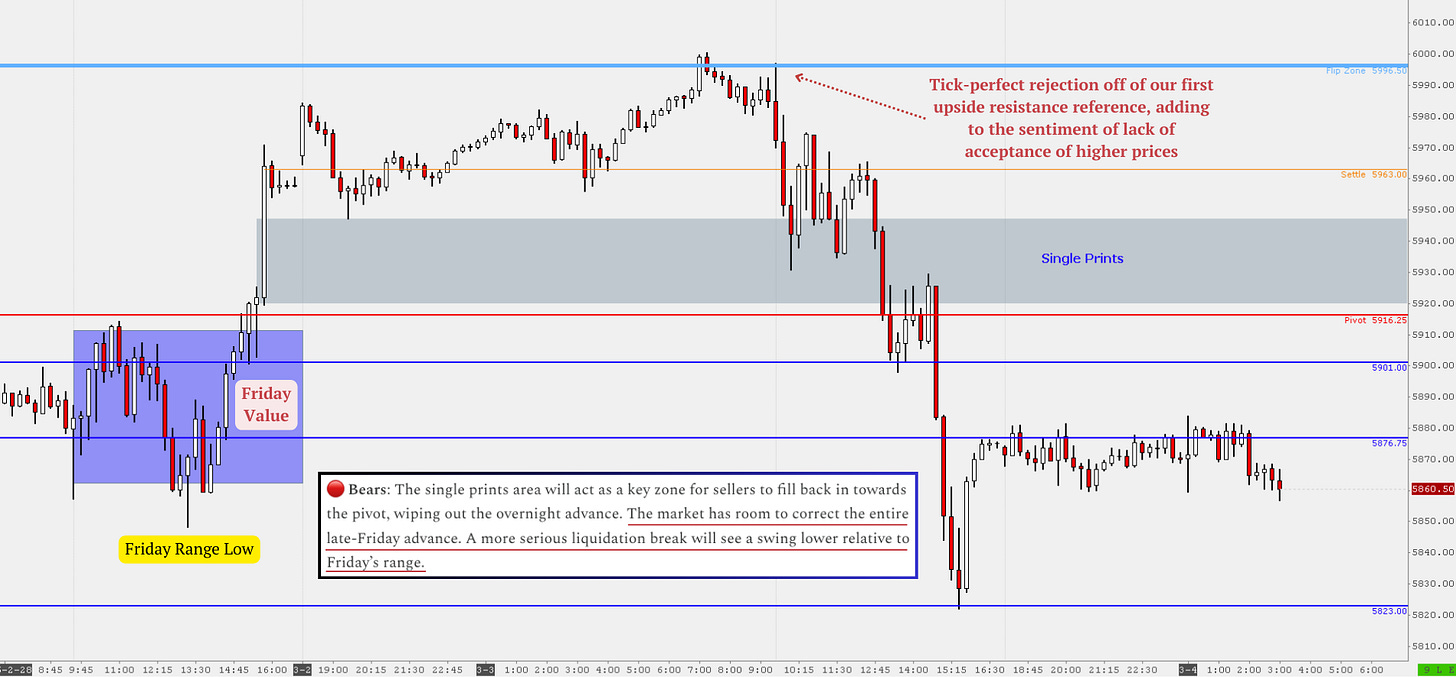The Market Brief
Hey team. U.S. stock futures indicated further declines on Wall Street after the S&P 500 experienced its largest drop of the year, driven by mounting concerns over global trade tensions.
Let’s re-cap Monday’s session and see what’s next!
Macro Viewpoint
U.S. stock index futures fell on Tuesday after a sharp decline on Wall Street the day before, prompted by President Donald Trump's decision to impose tariffs on trade partners, escalating concerns of a global trade war that could hinder economic growth.
The S&P 500 saw its largest single-day drop since mid-December on Monday following the U.S. implementation of a 25% tariff on imports from Mexico and Canada, as well as a hike in tariffs on Chinese goods to 20%.
Market participants are factoring in the potential for these tariffs to drive up inflation, reduce demand, and negatively impact corporate earnings, especially with recent data raising fears of a slowing economy.
The new tariffs represent Trump's most significant effort to overhaul global trade, and investors are closely anticipating his address to Congress on Tuesday for clues on what steps he might take next.
Prior Session Deep Dive
First off, the easiest thing we could do would be to open a chart, slap 10 lines on it a day after the fact, and start writing that the market wiped out the entire Friday advance because of some trending headline—then proceed to talk about how “our model caught this move” or whatever influencing LARPs you see on socials come up with these days.
We don’t do that here. Everything we write about is based on things we’ve said hours or even days before the fact, exclusively in this newsletter—when no fancy headlines like “tariffs” could have existed at that time.
What you see in the picture above is the data we had to work with while writing the last market brief.
This is exactly where the market was in terms of price, structure, and time.
Highlighted are some nuances we were analyzing to craft the market outlook you see in the picture above.
The picture above shows how the session unfolded afterward, along with where our market references were at the time.
Read word for word what we wrote in our market outlook, including the bearish scenario at 5 AM, and ask yourself if anything other than exactly that happened during the entire session.
There is a substantial difference between following price, which has no context, and following value. Market structure leaves clues that you can capitalize on.
Here are some questions you need to ask when evaluating the market:
How much room does the market have if we are to break?
Where is price in relation to value?
Is the overnight inventory long or short, and therefore anticipate a correction?
Can we “flip” this resistance into support and therefore expect continuation, or not?
Is it likely new money buying the market, or is this forced buying and short stops getting hit, leading to short covering?
The scope of our Substack is to put you in the driver’s seat and help you develop market understanding, so no matter which market you trade or strategy you use, you have a proper field of vision and can anticipate things that most people have no idea about.
Develop better context and create a robust entry model by understanding all the market nuances we share on a daily basis. This will help you build the market understanding that most traders lack.




